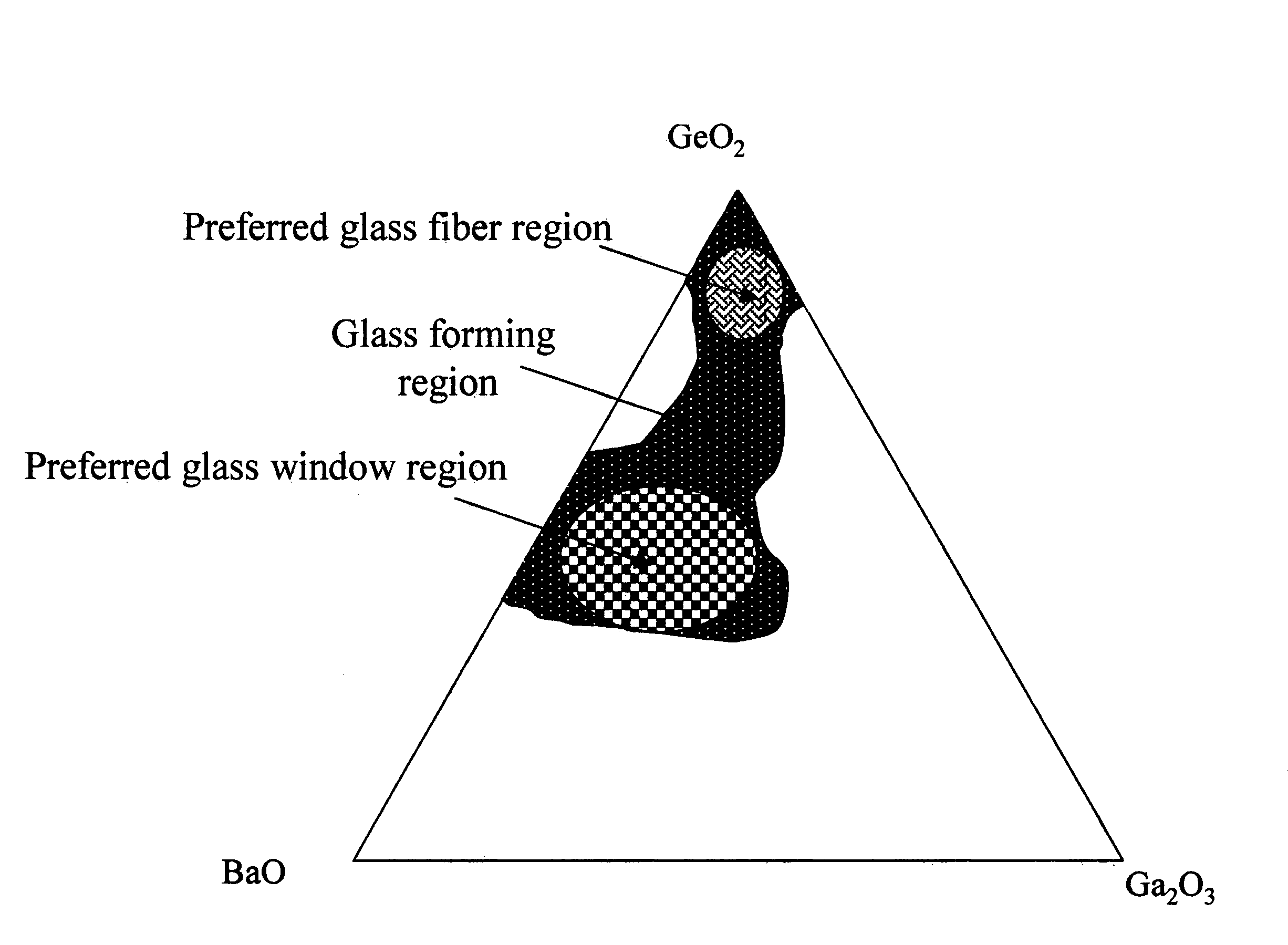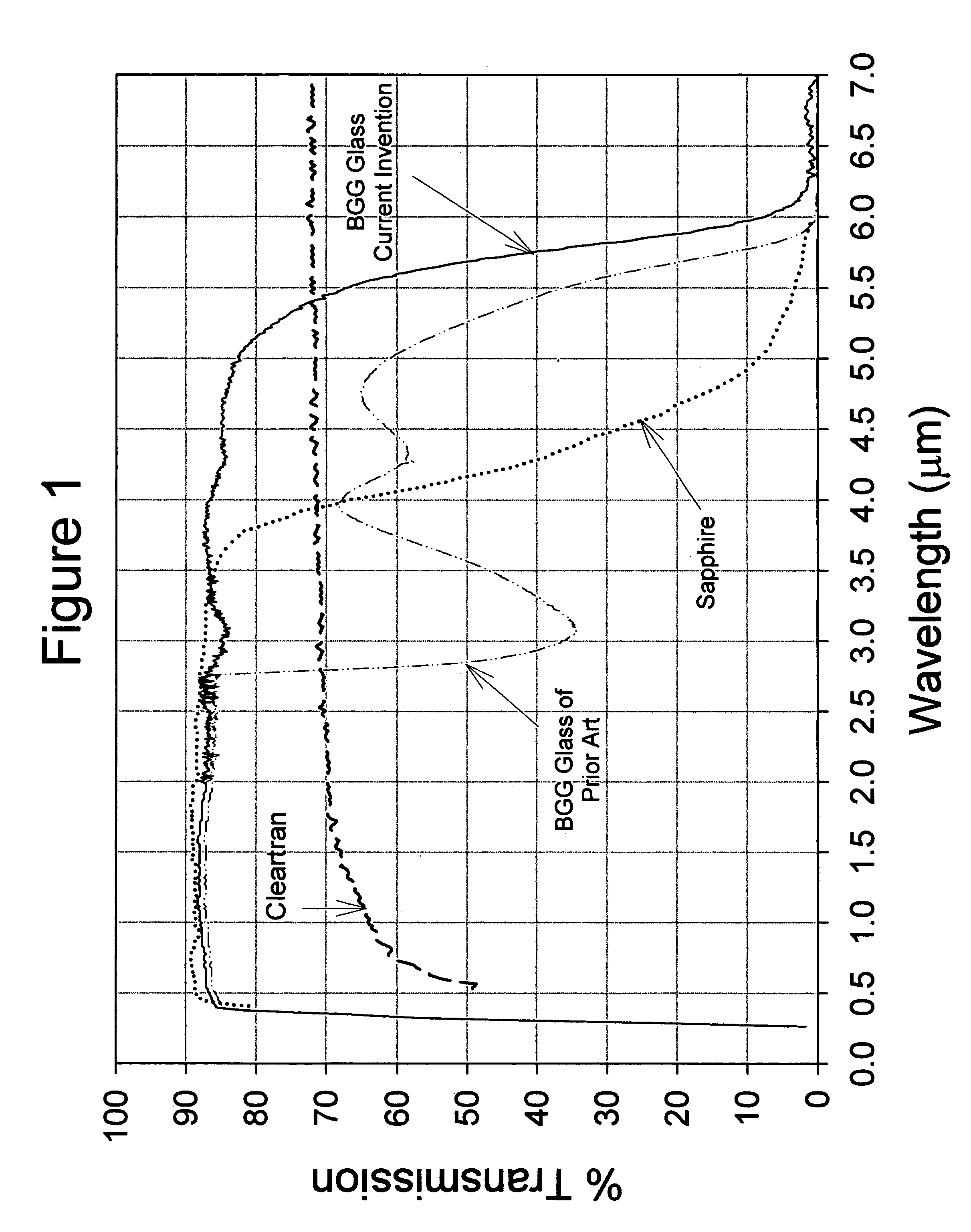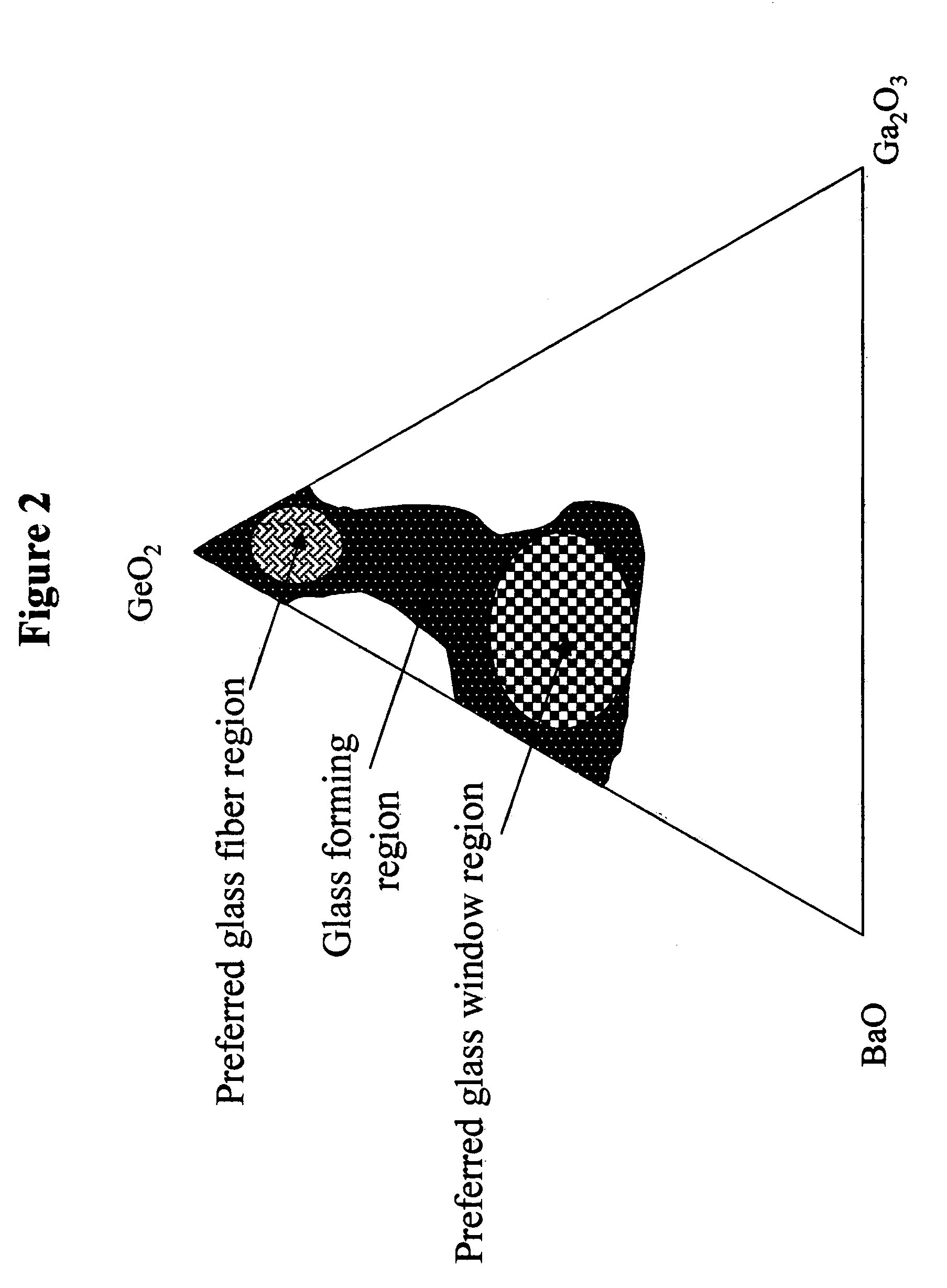Optical transmission of BGG glass material
a technology of optical transmission and glass material, applied in the field of optical transmission, can solve the problems of limited transmission, difficult and expensive shape making with currently used window materials, and inability to meet the needs of users, and achieve the effect of improving optical transmission and long infrared cut-off wavelength
- Summary
- Abstract
- Description
- Claims
- Application Information
AI Technical Summary
Benefits of technology
Problems solved by technology
Method used
Image
Examples
example 1
[0039]This example details the use of 5 mole percent of barium chloride powder as the halogen component in making a BGG glass of this invention.
[0040]A 125-gram BGG glass component batch of 42.9 mole % barium oxide (BaO), 17 mole % gallium oxide (Ga2O3), and 40.1 mole % germanium oxide (GeO2) was prepared by mixing 58.8 grams of barium carbonate (BaCO3), 8.18 grams of barium chloride (BaCl2), 25.05 grams of gallium oxide (Ga2O3) and 32.97 grams of germanium oxide (GeO2). The glass batch was mixed in a mixer for 30 minutes and was then transferred to a platinum crucible. The platinum crucible containing the batch material was placed in a pre-melting furnace preheated to 1350° C. The batch material was left in the furnace to melt and allow evolution and removal of CO2 gas for 10 minutes and then quenched in air to make a cullet. The cullet was then transferred to another crucible that was loaded in a sealed atmosphere controlled furnace. The furnace was flushed with dry argon for one ...
example 2
[0041]This example details the fabrication of a composite with alumina (Al2O3) on both surfaces of a bulk BGG glass substrate.
[0042]A glass melt was prepared in a process similar to the one described in Ex. 1, above. The BGG glass was polished to an optical finish. Polished BGG glass measuring 1″×1″×½″ was then coated with 5 μm thick alumina on both sides using ion-assist e-beam evaporation. The coated substrate was tested for environmental durability as per MIL-F-48616 test and rain erosion resistance at 90° and 45° impact angles of 2 mm water drops hitting the substrates at various speeds. The results of the environmental and the rain erosion resistance tests are shown in Tables 3 and 4. All the samples passed all the tests.
[0043]
TABLE 3The following tests were performed on aluminacoated BGG glass samples in sequence:1. Adhesion2. Humidity, at 24 hours at 120° F. and 95-100% RH3. Moderate Abrasion, 50 strokes at 1 pound of force4. Severe Abrasion, 20 strokes at 2-2.5 pounds of for...
example 3
[0047]This example details the fabrication of a composite with sapphire on both surfaces of a bulk BGG glass substrate.
[0048]A BGG glass melt was prepared in a process similar to the one described in Ex. 1. A 1-millimeter thick single crystal disk 1″ in diameter was placed in the mold first and the glass was poured on it. A second sapphire single crystal disk was immediately placed on the glass melt while the melt was still fluid and was gently pressed to push the sapphire crystal slightly below the surface to the desired height. The final product was a self-standing monolithic window with the surface hardness and strength of sapphire and the optical properties of BGG window.
[0049]The advantages of this invention are the following:
[0050]1. A new glass devoid of the —OH absorption band with excellent transmission in the visible to mid-IR wavelength region.
[0051]2. A glass that is stable and can be scaled up in size and is easily moldable in any size and complex shape to provide high ...
PUM
| Property | Measurement | Unit |
|---|---|---|
| glass transition temperature | aaaaa | aaaaa |
| crystallization temperature | aaaaa | aaaaa |
| liquidus temperature | aaaaa | aaaaa |
Abstract
Description
Claims
Application Information
 Login to View More
Login to View More - R&D
- Intellectual Property
- Life Sciences
- Materials
- Tech Scout
- Unparalleled Data Quality
- Higher Quality Content
- 60% Fewer Hallucinations
Browse by: Latest US Patents, China's latest patents, Technical Efficacy Thesaurus, Application Domain, Technology Topic, Popular Technical Reports.
© 2025 PatSnap. All rights reserved.Legal|Privacy policy|Modern Slavery Act Transparency Statement|Sitemap|About US| Contact US: help@patsnap.com



